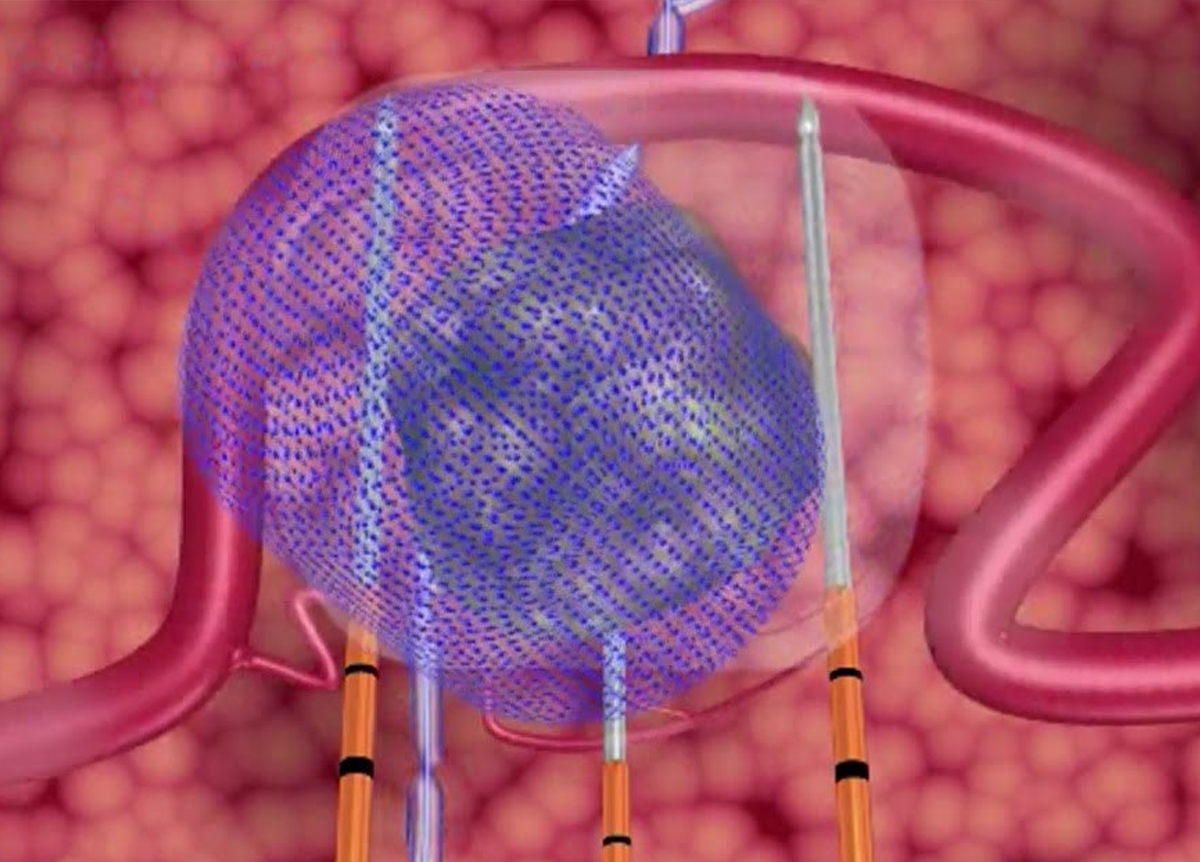
What is NanoKnife?
How does it work?
NanoKnife is a type of surgical device used to destroy cancer cells. It works by using a method called electroporation to temporarily puncture the membranes of cancer cells, causing them to die. Electroporation creates temporary openings in the cell membranes, creating gaps in the membranes and allowing fluids within the cells to leak out into the surrounding area. The spread of these fluids causes the cells to die and the tumor to shrink.
NanoKnife is a device with 4 needles that perform electroporation to destroy cancer cells. These needles are inserted into the tumor area, and an electric current is applied to eliminate the cancerous cells. NanoKnife is a minimally invasive procedure that can be performed under local anesthesia without the need for surgery.
Which types of cancer can be treated with NanoKnife?
NanoKnife is particularly used in cases where the cancer has spread and surgery or radiation therapy is not suitable. The FDA-approved uses of NanoKnife currently include:
- Pancreatic cancer: Pancreatic cancer is often located in a place where surgery is not feasible. NanoKnife can be used to kill cancer cells without the need for surgery, as an alternative to other methods used in the treatment of pancreatic cancer.
- Liver cancer: NanoKnife can be used in cases where surgery is not feasible for liver cancer as well. It targets tumors in the liver and only affects cancerous tissues.
- Prostate cancer: It can also be used in the treatment of prostate cancer. Since the prostate is located near the bladder, nearby organs may be affected during treatment. NanoKnife can be used as an alternative to surgical intervention in the treatment of prostate cancer.
In addition, NanoKnife is used in some centers for the treatment of breast cancer, kidney cancer, lung cancer, ovarian cancer, and other cancer types. However, these uses are not yet FDA-approved and further research is needed.
Questions and Answers about NanoKnife:
Is NanoKnife procedure painful?
Generally, NanoKnife procedure is painless. However, local anesthesia or sedation may be used as the patient needs to be conscious during the procedure. Postoperative pain is also minimal and can be controlled with medication.
Which types of cancer can be treated with NanoKnife?
NanoKnife can be used for many types of cancer, especially for cancers with limited surgical options. For example, it can be used for pancreatic, liver, prostate, kidney, lung, and lymphoma cancers.
What is the recovery process like after NanoKnife treatment?
The recovery process after NanoKnife treatment can vary depending on the size of the area where the surgery was performed and the patient’s overall health. However, typically patients are discharged from the hospital within a few days and need to wait a few weeks to return to normal activities.
How long does NanoKnife treatment take?
The duration of the NanoKnife procedure can vary depending on the size and location of the area where the surgery is performed. However, typically the procedure takes between 1 to 3 hours.
Is NanoKnife treatment more effective than other methods for cancer treatment?
NanoKnife is an advantageous option compared to other methods for cancer treatment because it helps kill cancer cells while causing minimal damage to healthy tissues. However, since each cancer case is unique, treatment options are individualized, and your doctor will determine the best treatment method for you.